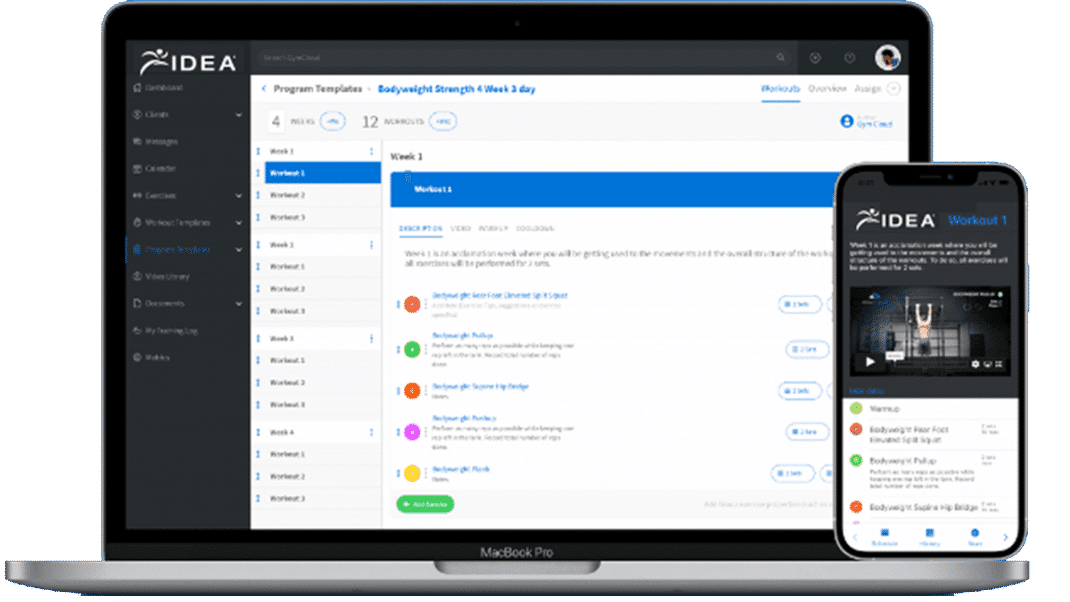The Best Social Media Platforms for Business Owners
Social media can help you advance your business, but which platform is best for you?

Many business owners and trainers in the fitness industry have used the following social media channels successfully to increase their online exposure and business.
With close to a billion users, Facebook has the largest user base of all social media platforms. Facebook also has the widest demographic range. It is robust in functionality, and it’s popular with business owners in most business-to-consumer industries.
Best Practices
- Focus on engagement. Just because you post an update, it doesn’t mean that all of your fans will see it. The more engagement you ask for (likes, comments and shares), the more likely you are to show up in news feeds.
- Remember that Facebook ranks content to determine whether it is engaging enough to show to your fans. Videos and pictures are considered the best type of content, followed by links and then plain text.
- Don’t post too frequently. About 7–10 times per week should be enough.
- Monitor your page regularly, and respond to comments.
- Avoid overt marketing messages.
- Show off your facility and staff/trainers with photos and/or videos.
|
Pros |
Cons |
|
Facebook has lots of active users. |
Generating good content can be time-consuming. |
|
There are many useful features, like event management, special tabs and the ability to schedule posts. |
Facebook’s content ranking system (EdgeRank) can make it hard to reach users. |
|
Facebook Insights offers analytics that help you improve your posts. |
There is no customer service. |
|
Facebook ads are very affordable, and they’re a great way to build followers. |
Negative posts cannot be addressed and/or removed easily. |
|
There is a robust Help section, as well as a Business Center with best practices and advice. |
|
Pinterest has grown exponentially since its launch in 2010. It currently has 70 million users, known as “pinners,” most of whom are women (The Next Web 2013). Pinners use this platform to collect ideas and curate interest boards. The platform is 100% visual, so you will need a lot of images if you plan to use it.
Best Practices
- Verify your website to gain access to analytics.
- Re-pin relevant pins to your boards.
- Create a set of boards to organize your topics (workout tips, inspiration, products, etc.).
- Use hashtags in your pin descriptions, so users can find you. (See the “Further Reading” sidebar for a resource to help you learn more about hashtags.)
- Place your logo or Web address on images to ensure that pinners know where the pin came from.
|
Pros |
Cons |
|
Pinterest is easy to use. |
You will need lots of images. |
|
It’s very popular right now. |
Most of the users are women; if you are targeting men, this is not a good platform to use. |
|
It does not require much time to maintain. |
You may need some photo-editing software to produce and brand images. |
YouTube
More than a billion unique users visit YouTube each month (YouTube 2013). This video-sharing platform is very popular in the fitness world, and it can be a great tool for building your business.
Best Practices
- Upload high-quality videos. (Low-quality videos could discredit your professionalism and do more harm than good.)
- Take advantage of the Featured Videos option.
- Add descriptions and tags to all of your videos.
- Create a posting schedule and stick to it, so users will know when to expect the next video.
- Cross-post your videos to other social media platforms.
- Monitor and respond to comments.
- Embed videos on your website and/or blog.
|
Pros |
Cons |
|
YouTube analytics are great for tracking performance. |
You may need video-editing software in order to enhance videos before posting them. |
|
If your channel becomes popular, you can sell advertising. |
Videos need to be high-quality to attract users to your channel. |
|
Videos are easy to upload. |
Making a good video can be very time-consuming. |
|
YouTube is great for search engine optimization. |
YouTube can feature competitors’ advertisements around your videos. |
|
|
There is no customer service. |
Foursquare
Foursquare is a great platform for fitness facilities. Users “check in” to identify where they are, and these check-ins are broadcast to their friends—giving your business more exposure. Businesses can create “Check-in Specials” to encourage members to visit and check in more frequently. If you are a personal trainer, you can enhance exposure by checking in as yourself and leaving tips at the places you train and/or workout. Other Foursquare users will see your tips.
Best Practices
- Create check-in specials to encourage frequent check-ins (e.g., a free T-shirt on a user’s 10th check-in).
- Use Foursquare analytics to see who is checking in and when.
- Add your events to the event calendar, and post updates as you would on Facebook.
- Reward “mayors”—users with frequent check-ins—to create competition around being the mayor of your establishment.
|
Pros |
Cons |
|
Users can link Twitter and Facebook accounts to Foursquare and cross-post their check-ins. |
Users can leave negative tips that cannot be removed. |
|
The built-in rewards system is easy to use and will help encourage members to interact. |
Some people are apprehensive about using Foursquare because of privacy concerns. |
|
Foursquare has an app for businesses. |
Users can check in when they are near your establishment but are not actually at it. |
|
Frequent users can become mayors. |
|
Twitter is a fast-paced social media platform with 218 million active users (All Twitter 2013). Twitter is popular with young, diverse crowds. It relies on short snippets of information—posts cannot be more than 140 characters long. However, this platform can be time-consuming to navigate and manage.
Best Practices
- Tweet multiple times throughout the day to ensure you are reaching all of your followers.
- Follow users who follow you, and find users in your area to follow as well.
- Use tools like HootSuite®, TweetDeck and BufferApp to schedule tweets in advance.
- Search Twitter frequently for mentions of your name or brand name. (If you use a tool like HootSuite, you can set up a column to help monitor mentions in real time.)
- Respond to mentions.
- Thank people for re-tweeting and following you.
- Share other people’s content with a re-tweet.
- Follow all local media.
- Use hashtags.
|
Pros |
Cons |
|
Twitter makes connecting to people very easy. |
In order to reach people, you have to tweet a lot. |
|
Twitter’s high volume and fast pace make it easier to find content. |
You need to be there to respond. |
|
You can create lists to organize your Twitter stream. |
Twitter has no built-in analytics. |
|
The Twitter app is great for push notifications and for sending tweets from anywhere. |
Twitter language can take a little getting used to. |
Honorable Mentions
The following social media channels can enhance your online presence, but they are not essential—nor should they be the only platforms you use.
Instagram
Instagram users are fanatical about uploading photos of everything that surrounds their lives. With its unique photo filters and features, Instagram makes everyone a photographer. Lots of brands are using the platform to post “behind the scenes” photos, product information, photos of staff and more.
LinkedIn
Simply stated, LinkedIn is an extension of your networking efforts. If you attend networking events, LinkedIn is great for connecting with LinkedIn members you’ve met in person and staying in touch on a professional level. For more information about LinkedIn, check out the article “Using LinkedIn for Financial Success” in the October 2013 issue of IDEA Trainer Success.
While there are many options for creating a social media presence to elevate your exposure online, be choosy. Decide which platform(s) your target market is using, and then pick one or two that you can devote time to. It’s better to have a significant presence on only one platform than a mediocre presence on several of them.
SIDEBAR: Further Reading
Check out the links below for further reading on social media demographics and best practices.
Demographic stats: http://pewinternet.org/Reports/2013/Social-media-users/Social-Networking-Site-Users/Demo-portrait.aspx
Facebook for Business: www.facebook.com/business
Pinterest Best Practices: http://business.pinterest.com/best-practices/
Foursquare for Business: http://support.foursquare.com/categories/20060487-Foursquare-for-Business
Instagram for Business: http://business.instagram.com/blog/
Twitter for Business: https://business.twitter.com/
Hashtags 101: www.beemergent.com/2013/06/24/hashtags-101/
Ashley Ray
Ashley Ray is the founder and owner of Emergent Social Solutions, a full service social media management consulting business. Ashley has experience managing social media for national healthcare providers, mayoral campaigns and a variety of other industries. She brings true social media experience and expertise to her clients and agency partners. Find her online at www.BeEmergent.com or on Twitter @ARayRVA or @BeEmergent





